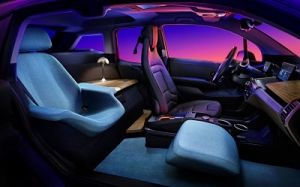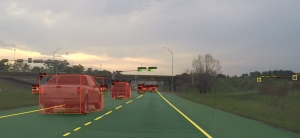StradVision CEO: ADAS, Autonomous Driving Technologies Will Help Limit Accidents, Fatalities Among Aging Drivers
Editor's Note: In the article below, StradVision CEO Junhwan Kim talks about the advances being made in autonomous vehicle safety, and what it will take to get that technology to the masses in the coming years.
=====
By Junhwan Kim, StradVision CEO
As the number of vehicles around the world rapidly expands, the occurrence of traffic accidents and their fatality rate is increasing. According to the World Health Organization, more than 1.3 million people worldwide die in road accidents every year, and traffic accidents kill one person every 24 seconds.
An increase in the number of elderly drivers is also emerging as a new concern. In most developed countries, the proportion of elderly drivers over the age of 65 started to increase steadily in the 2000s, and by 2019, it increased by more than 50 percent. For example, the number of drivers over the age of 65 in the U.S., compiled by the U.S. NHTSA in 2019, exceeded 54.1 million, which is a significant increase of 35% compared to 2010. The reason we need to prepare for the aging of drivers is because of the high fatality rate in that age range, compared to other age groups in the event of a traffic accident. According to a survey of senior driver safety conducted by RAND Corporation, these drivers over the age of 65 have a lower accident rate than the average adult driver, but are 573% more likely to die in an accident.
Many countries are devising automobile safety policies to reduce traffic accidents and mortality, and recommend that automakers reflect these safety policies in driving technology. In response to these changes in government policy, OEMs are expanding the introduction of the Advanced Driver Assistance Systems (ADAS) for the safety of drivers and pedestrians. According to data released in 2021 by Strategy Analytics, the global ADAS industry size has already exceeded $20 billion in 2020 and is expected to reach $49.3 billion by 2025, a rapid growth rate of 17.7% per year.
StradVision and Vueron Technology partner to create ‘Sensor Fusion’ for AVs and ADAS
StradVision, a pioneer in AI-based vision processing technology for Autonomous Vehicles and ADAS systems, today announced that it will introduce 'Sensor Fusion', a groundbreaking perception technology with significant precision improvement compared to existing technology, through a collaboration with Vueron Technology, a leading South Korean provider of Lidar perception software and autonomous driving technology.
This technology is powered by StradVision's AI-based camera perception software 'SVNet' and Vueron Technology's Lidar -based perception solution 'View.One'. Working together, the two companies plan to deliver industry-leading ‘Sensor Fusion’ technology to the global automotive industry. This next-generation solution combines the camera’s advantages in object classification and lane detection with Lidar’s advantages in object detection and velocity prediction.
“We are excited to announce our collaboration with Vueron Technology for this innovative technology that is highly anticipated in the automobile industry. We believe that ‘Sensor Fusion’ can dramatically improve the limitations of the existing perception technology. We will work closely to prove our technology and provide the most advanced solutions to the automotive industry”, said Junhwan Kim, CEO of StradVision.
BMW, at CES 2020, to reveal its i3 Urban Suite
At the Consumer Electronics Show 2020 — taking place in Las Vegas January 7-10, 2020 — the BMW Group will be presenting its approach to creating the mobility experience of the future.
For seven years, the BMW i3 has played the role of ambassador for electric driving, sustainability and intelligent connectivity in urban areas. These qualities have helped to make it the world’s best-selling electric car in the premium compact segment.
And now the BMW Group has brought the BMW i3 Urban Suite to this year’s CES in Las Vegas to reveal a mobility experience tailored entirely to the passenger’s individual needs.
Renesas Electronics, StradVision Collaborate on Smart Camera Development for Next-Generation ADAS
Renesas Electronics Corporation, a supplier of advanced semiconductor solutions, and StradVision, Inc., a vision processing technology solutions provider for autonomous vehicles with expertise in deep learning, have announced the joint development of a deep learning-based object recognition solution for smart cameras used in next-generation advanced driver assistance system (ADAS) applications and cameras for ADAS Level 2 and above.
To avoid hazards in urban areas, next-generation ADAS implementations require high-precision object recognition capable of detecting so-called vulnerable road users (VRUs) such as pedestrians and cyclists. At the same time, for mass-market mid-tier to entry-level vehicles, these systems must consume very low power. The new solution from Renesas and StradVision achieves both and is designed to accelerate the widespread adoption of ADAS.
“A leader in vision processing technology, StradVision has abundant experience developing ADAS implementations using Renesas’ R-Car SoCs, and with this collaboration, we are enabling production-ready solutions that enable safe and accurate mobility in the future,” said Naoki Yoshida, Vice President of Renesas’ Automotive Technical Customer Engagement Business Division. “This new joint deep learning-based solution optimized for R-Car SoCs will contribute to the widespread adoption of next-generation ADAS implementations and support the escalating vision sensor requirements expected to arrive in the next few years.”
News Categories
Popular Tags
Search Reviews by Make

AutoTechReviews is your home for In-depth reviews of the latest cars, trucks, and SUVs; information on all the emerging vehicle technology; and breaking news from the world of NASCAR and other motorsports.




